
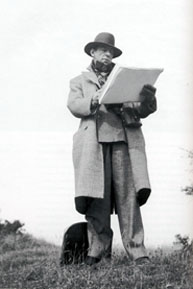
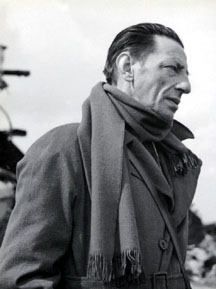
paul nash 1889-1946



Probably the greatest British artist of the 20C.
It is a scandal that Nash is not better known in Europe and America.
Paul Nash was an Official War Artist during both the First and Second
World Wars.
He studied at the Slade School and later taught at the Royal College
of Art where he encouraged his students, Ravilious and Bawden
amongst them, to work as illustrators, designers and decorators.
An inspiring tutor by all accounts.
The attempt by Nash to integrate his work into modern life was prompted by
an avant-gardist desire to engage with audiences outside of the normal
gallery context. Furthermore he hoped, like his design patrons Frank Pick and
Harold Curwen, that art, beauty and modern life could be reconciled. Of course,
Nash's own work was characterised by the sadness and melancholy of his
own experience during WW1.
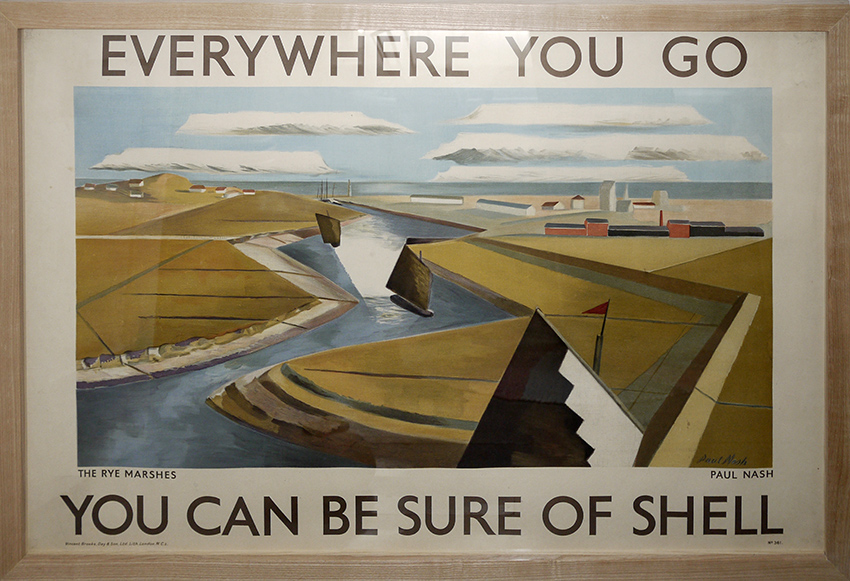
original shell poster of Rye Marshes 1932 sold

rare original
shell lorry bill poster 1935 p.o.a.
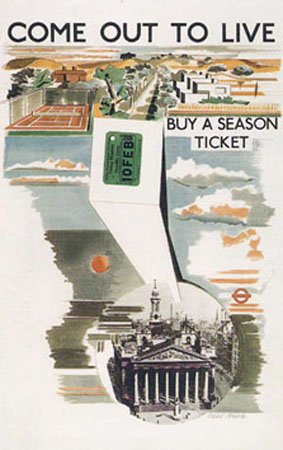
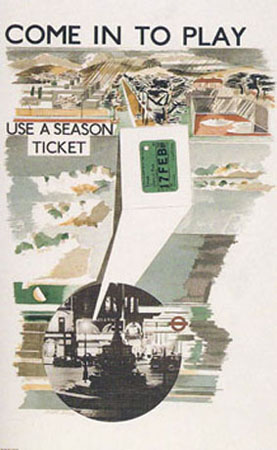 LT posters 1936 sold
LT posters 1936 sold
 WW2 National Gallery print - Battle of Britain sold
WW2 National Gallery print - Battle of Britain sold
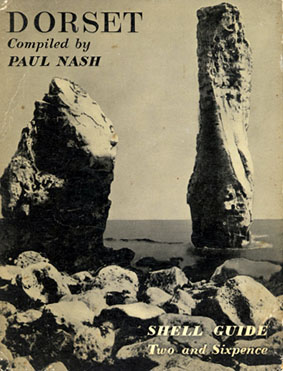 shell county guide sold
shell county guide sold
see also our pages on
posters from a private collection
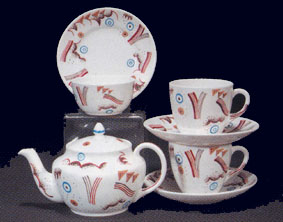 teaset by foley 1933
teaset by foley 1933
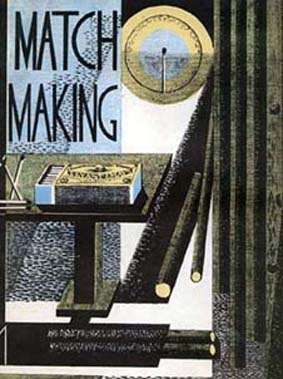 book design for Bryant and May 1933
book design for Bryant and May 1933
Nash was a member of Unit One (1933) and also of the English Surrealist
movement. He wasinterested in photography and was at the forefront of
attempts to integrate photgraphic elements into the visual language of the
fine arts. Nash lived in Judd Street, London, at Dymchurch on Romney Marsh
and in Dorset.
Nash's greatest paintings were often retrospective and symbolic
representations of specific landscapes - the battlefields of WW1,
the sea wall at Dymchurch and Romney Marsh in Kent, the Dorset coast,
the ancient stone circle at Avebury, Wiltshire, and of other ancient
sites in England including Wittenham Clumps.
Nash was an avant-gardist and polemical writer during the 1930s through the
pages of the Architectural Review and Axis.
The images below are of some of Nash's greatest paintings. They are held in
British public collections and we have made a note of the location of each
picture. These are simply our own favourites.
 WW1 painting - We Are Making A New World 1918 (IWM)
WW1 painting - We Are Making A New World 1918 (IWM)
 The Shore (at Dymchurch) 1923 (Leeds)
The Shore (at Dymchurch) 1923 (Leeds)
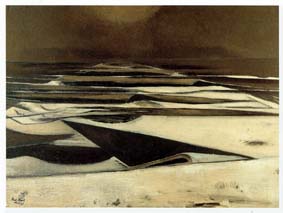 Winter Sea (Dymchurch) 1925 (York)
Winter Sea (Dymchurch) 1925 (York)
 Northern Adventure (St Pancras) 1929 (Aberdeen)
Northern Adventure (St Pancras) 1929 (Aberdeen)
 Wood on the Downs 1930 (Aberdeen)
Wood on the Downs 1930 (Aberdeen)
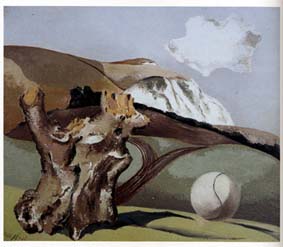 Event on the Downs 1934 (Govt Art Col)
Event on the Downs 1934 (Govt Art Col)
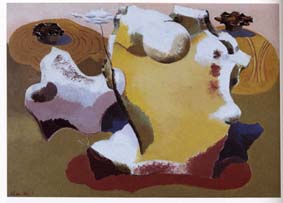 Landscape of the Megaliths 1934 (Brit Council)
Landscape of the Megaliths 1934 (Brit Council)
 Totes Meer (Dead Sea) 1940 (Tate)
Totes Meer (Dead Sea) 1940 (Tate)
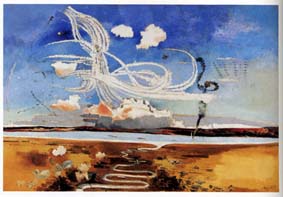 Battle of Britain 1941 (IWM)
Battle of Britain 1941 (IWM)
 Battle of Germany 1944 (IWM)
Battle of Germany 1944 (IWM)
 contemporary lithograph 1937
contemporary lithograph 1937
 cover for the prospectus of Contemporary Lithographs 1937
cover for the prospectus of Contemporary Lithographs 1937
Wonderful Tate Liverpool retrospective held in 2003
Paul Nash: The Elements
10 February – 9 May 2010
Paul Nash (1889 – 1946) painted beautiful landscapes of the Downs, strange flooded rooms, and classic images of two World Wars. The exhibition includes paintings, watercolours and photographs from the whole of his career, showing how he selected elementary objects, to put them in relationships of conflict or harmony, and found pathways, nests and thresholds between them and within them.
EXHIBITIONS:
26 October 2016 - 5 March 2017 TATE BRITAIN
8th April 2017 - 20 August 2017 Sainsbury Centre Norwich
until 24th January 2018 - Newcastle ( travelling Tate exhibition )
GICLEE LIMITED EDITION PRINT
printed after the original oil painting of The Shore at Dymchurch Kent
numbered limited edition of 850
c.37.5cms. x 54.2cms - image size. (original image size 62.2cms. x 94cms.)
£180
printed after the original artwork for Rye Marshes East Sussex for Shell Oil poster
numbered limited edition of 850
c. 30.5cms. x 55cms.
£180
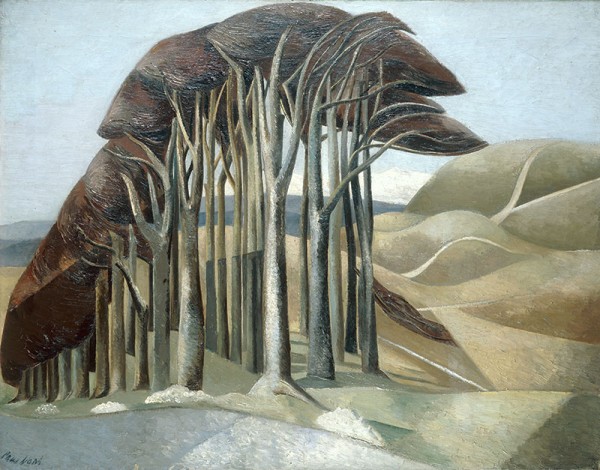
Wood on the Downs,
numbered
limited ed. 850
£180

paperback 1944 ( slightly scuffed edges) fully illustrated £9

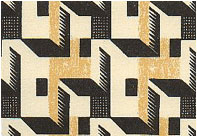
original Paul Nash pattern paper printed at Curwen Press
c.20" x 25" sheets (limited availability)
£65 each
PAUL NASH IN PICTURES hb. fully illustrated in colour
£25

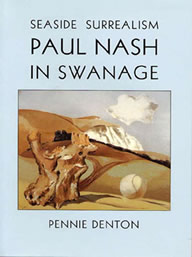
Brothers in Arms John and Paul Nash, pb. fully illustrated £16.50
Seaside Surrealism Paul Nash in Swanage, pb. mainly b&w illustrated (only a few copies available o/p £50)


paul nash in his studio
to return to our main index page